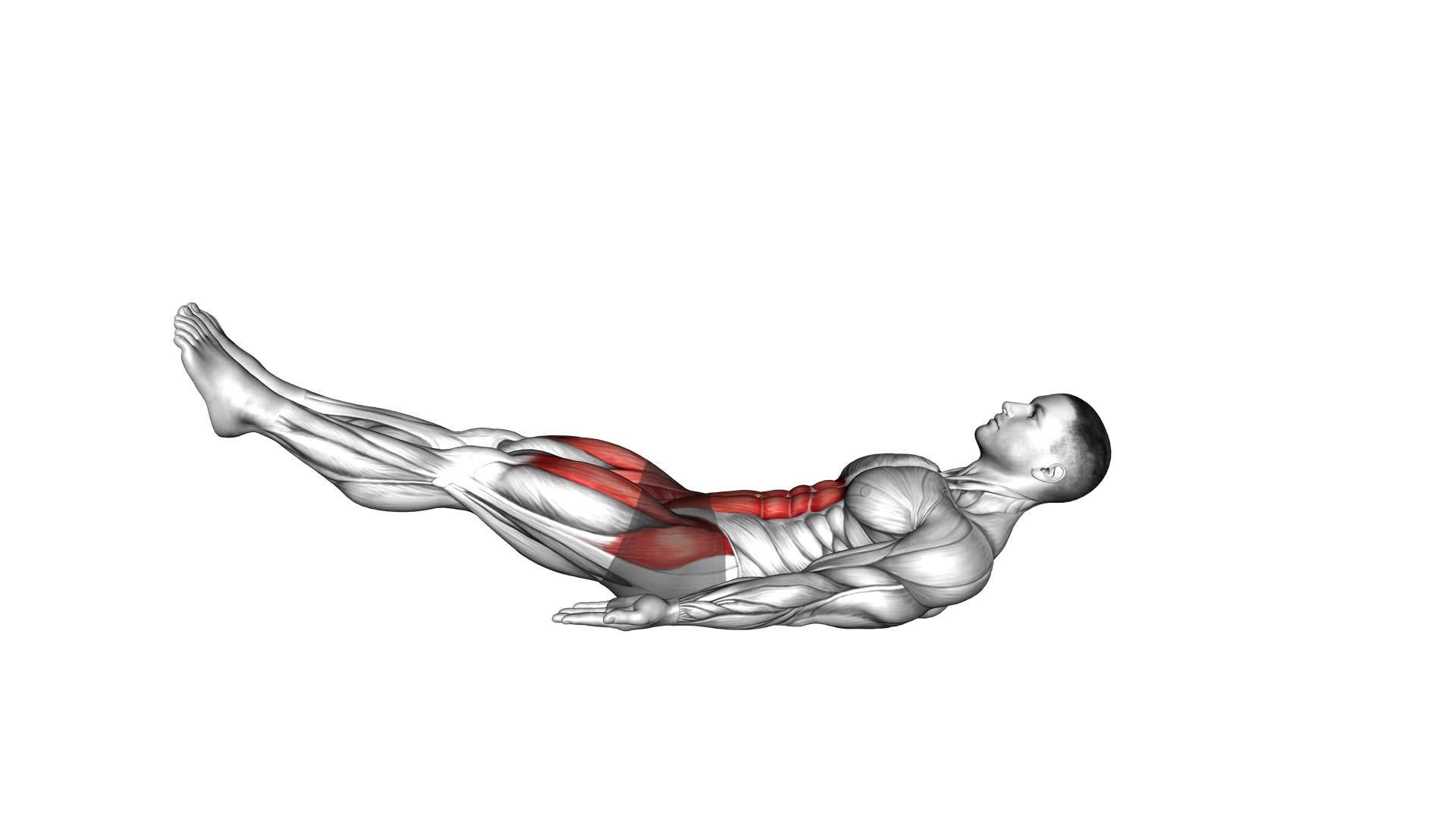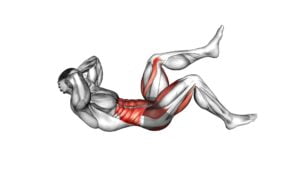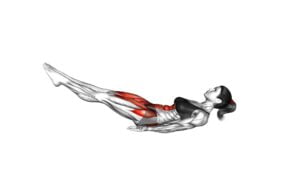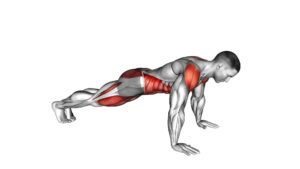Lying Toe Tap (male) – Video Exercise Guide & Tips

Are you looking for an effective exercise to target your abs? Look no further than the lying toe tap!
Watch This Exercise Video
This video exercise guide and tips will show you how to properly perform this exercise to maximize your results. Avoid common mistakes and learn variations to keep challenging yourself.
Get ready to strengthen your core and achieve those rock-hard abs with the lying toe tap exercise.
Let's get started!
Key Takeaways
- The lying toe tap exercise strengthens the core and improves stability.
- It helps prevent injuries by stabilizing the spine and pelvis.
- The exercise improves balance and proprioception.
- It activates the abdominal muscles, hip flexors, glutes, and quadriceps.
Benefits of the Lying Toe Tap Exercise
To fully understand the benefits of the Lying Toe Tap Exercise, it's important for you to recognize how it can strengthen your core and improve your overall stability. This exercise is highly effective in injury prevention and muscle activation.
One of the key benefits of the Lying Toe Tap Exercise is its ability to prevent injuries. By engaging your core muscles, this exercise helps to stabilize your spine and pelvis, reducing the risk of strains and sprains. The controlled movement of tapping your toes also helps to improve your balance and proprioception, further reducing the likelihood of accidents and falls.
Additionally, the Lying Toe Tap Exercise activates multiple muscle groups simultaneously. As you tap your toes, your abdominal muscles, including the rectus abdominis and obliques, are engaged to maintain stability. The exercise also targets the hip flexors, glutes, and quadriceps, strengthening these muscles and improving their functionality.
By incorporating the Lying Toe Tap Exercise into your fitness routine, you can enhance your core strength, stability, and overall muscular endurance. This exercise is particularly beneficial for athletes, as it can improve performance in sports that require agility and balance.
Now that you understand the benefits of the Lying Toe Tap Exercise, let's move on to the next section, which will focus on proper form and technique for performing this exercise effectively.
Proper Form and Technique for Lying Toe Tap
Mastering proper form and technique is crucial for maximizing the effectiveness of the Lying Toe Tap exercise. Follow these tips to ensure you're performing the exercise correctly:
- Lie flat on your back with your legs extended and your arms by your sides.
- Engage your core muscles by drawing your belly button in towards your spine.
- Lift your legs off the ground, keeping them straight and together.
- Slowly lower your legs towards the ground, tapping your toes lightly before lifting them back up.
These four steps will help you maintain the proper form and technique for the Lying Toe Tap exercise. By doing so, you'll engage your core muscles effectively and minimize the risk of injury.
Now that you know the correct form and technique for the Lying Toe Tap exercise, it's important to be aware of common mistakes that can hinder your progress. In the next section, we'll discuss these mistakes and provide tips on how to avoid them.
Common Mistakes to Avoid During Lying Toe Tap
To avoid common mistakes during the Lying Toe Tap exercise, focus on maintaining proper form and technique. One common mistake to avoid is lifting your head and shoulders off the ground. This can put undue strain on your neck and upper back. Instead, keep your head and shoulders relaxed on the ground throughout the exercise.
Another mistake to watch out for is letting your lower back arch excessively. This can happen if you don't engage your core muscles properly. To prevent this, tighten your abdominal muscles and press your lower back into the ground as you perform the toe taps. This will help maintain a neutral spine position.
It's also important to avoid rushing through the exercise. Take your time and focus on controlled movements. Rushing can lead to sloppy form and decreased effectiveness. Remember to keep your legs straight and toes pointed as you tap them against the ground.
Lastly, don't forget to breathe properly. Inhale as you lower your leg and exhale as you tap your toes. Proper breathing will help you maintain stability and control throughout the exercise.
Progressions and Variations for Lying Toe Tap
Explore different progressions and variations for the Lying Toe Tap exercise to challenge and enhance your workout. Here are four modifications you can try:
- Single Leg Toe Tap:
Instead of keeping both legs extended, lift one leg off the ground and perform the toe tap only with the opposite leg. This variation increases the difficulty by requiring more core stability and balance.
- Weighted Toe Tap:
Hold a dumbbell or kettlebell in both hands and perform the exercise as usual. The added weight increases the resistance, making the exercise more challenging for your core muscles.
- Bicycle Toe Tap:
Start in the lying toe tap position and alternate tapping your toes side to side, as if you were pedaling a bicycle. This variation targets your obliques and adds a dynamic element to the exercise.
- Decline Toe Tap:
Position yourself on a decline bench with your head lower than your feet. This modification increases the intensity by challenging your core muscles to work against gravity.
By incorporating these progressions and modifications into your lying toe tap routine, you can continuously challenge your muscles and avoid plateaus.
Now, let's move on to the next section for tips on how to get the most out of the lying toe tap exercise.
Tips for Getting the Most Out of Lying Toe Tap
To maximize the effectiveness of the lying toe tap exercise, focus on maintaining proper form and engaging your core throughout the movement. This exercise isn't only great for improving flexibility, but also for increasing core strength.
Here are some tips to help you get the most out of the lying toe tap:
- Start by lying flat on your back with your legs extended straight up towards the ceiling. Keep your lower back pressed into the ground to engage your core.
- As you lower one leg towards the ground, make sure to keep your core engaged and your lower back pressed into the floor. This will help to protect your lower back and maintain proper form.
- Only lower your leg as far as you can while keeping your lower back pressed into the ground. If you feel your lower back lifting off the floor, you have gone too far.
- As you tap your toe to the ground, focus on using your core muscles to lift your leg back up to the starting position. This will help to strengthen your core and improve your stability.
Frequently Asked Questions
How Many Sets and Repetitions Should I Do for the Lying Toe Tap Exercise?
To determine the number of sets and repetitions for the lying toe tap exercise, consider factors like your fitness level and goals. Start with 2-3 sets of 10-12 repetitions and adjust based on your comfort and intensity.
Can the Lying Toe Tap Exercise Help Improve Balance and Coordination?
Yes, the lying toe tap exercise can help improve balance and coordination.
By engaging your core muscles and challenging your stability, this exercise requires you to maintain control and coordination throughout the movement.
It also helps to strengthen the muscles in your legs and hips, which are essential for balance.
To maximize the benefits, you can try different variations of the exercise, such as adding weights or performing it on an unstable surface.
Is the Lying Toe Tap Exercise Suitable for Beginners?
The lying toe tap exercise is suitable for beginners because it helps improve balance and coordination. By tapping your toes while lying down, you engage your core muscles and work on stability.
This exercise also benefits your lower body strength and flexibility. For beginners, you can modify the exercise by starting with a smaller range of motion and gradually increasing it as you get more comfortable.
Can I Perform the Lying Toe Tap Exercise Without Any Equipment?
Yes, you can perform the lying toe tap exercise without any equipment. This exercise doesn't require any props or additional tools. It can be done simply by lying on your back and tapping your toes to the ground.
This exercise is great for beginners as it helps strengthen your core and improve stability. However, if you want to add variations or make modifications, you can use props like a stability ball or resistance band to increase the intensity.
How Long Should I Rest Between Sets During the Lying Toe Tap Exercise?
To maximize the effectiveness of the lying toe tap exercise, it's important to consider rest periods. Resting between sets allows your muscles to recover and replenish energy.
The duration of your rest periods depends on your fitness level and goals. Generally, a rest period of 30-60 seconds is recommended for this exercise. However, listen to your body and adjust as needed.
Remember to maintain proper form throughout the exercise for optimal results.
Conclusion
In conclusion, the lying toe tap exercise is a beneficial workout that targets the core and improves stability.
By following the proper form and technique, you can maximize the effectiveness of this exercise.
It's important to avoid common mistakes and gradually progress to more challenging variations.
By incorporating these tips into your routine, you'll be able to get the most out of the lying toe tap exercise and achieve your fitness goals.

Author
Years ago, the spark of my life’s passion ignited in my mind the moment I stepped into the local gym for the first time. The inaugural bead of perspiration, the initial endeavor, the very first surge of endorphins, and a sense of pride that washed over me post-workout marked the beginning of my deep-seated interest in strength sports, fitness, and sports nutrition. This very curiosity blossomed rapidly into a profound fascination, propelling me to earn a Master’s degree in Physical Education from the Academy of Physical Education in Krakow, followed by a Sports Manager diploma from the Jagiellonian University. My journey of growth led me to gain more specialized qualifications, such as being a certified personal trainer with a focus on sports dietetics, a lifeguard, and an instructor for wellness and corrective gymnastics. Theoretical knowledge paired seamlessly with practical experience, reinforcing my belief that the transformation of individuals under my guidance was also a reflection of my personal growth. This belief holds true even today. Each day, I strive to push the boundaries and explore new realms. These realms gently elevate me to greater heights. The unique combination of passion for my field and the continuous quest for growth fuels my drive to break new ground.







